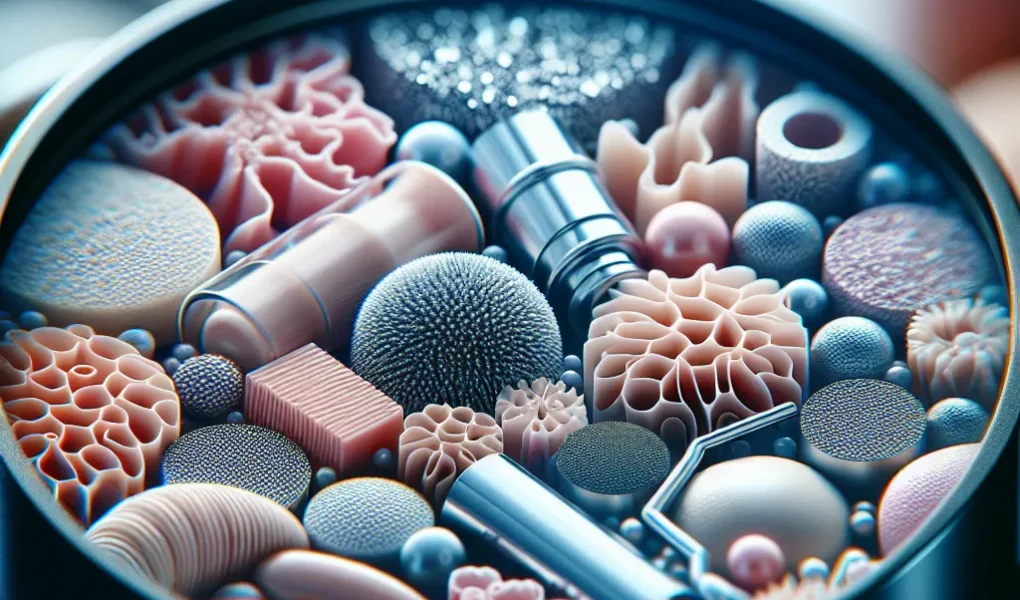Understanding the Chemistry Behind Makeup Formulas
When it comes to makeup, one of the essential products in every beauty lover’s arsenal is concealer. Understanding the chemistry behind makeup formulas can shed light on the effectiveness of concealer in providing coverage and achieving a flawless look. The science of beauty delves into the intricate details of the ingredients that make up concealer formulations, including pigments, emollients, and stabilizers. To explore a range of high-quality concealers with innovative formulas, check out concealer at INGLOT Cosmetics.
Understanding the Chemistry Behind Makeup Formulas
The beauty industry is continuously evolving, and so is the science behind the makeup formulas we use. Understanding the chemistry behind makeup ingredients is crucial for consumers who are becoming increasingly conscious about what they apply on their skin. A basic comprehension of the components in cosmetics can empower individuals to make informed choices regarding their beauty products.
Makeup is a complex blend of various chemicals, each serving a specific purpose. For instance, emollients like squalane and shea butter are added to provide hydration and smoothness to the skin. Similarly, pigments such as titanium dioxide and iron oxides give color to the products. Additionally, preservatives like parabens and phenoxyethanol are included to prolong the shelf life of the cosmetics. Understanding the function of these ingredients allows consumers to select products that align with their preferences and skincare needs.
Moreover, being aware of the chemical composition of makeup can aid in identifying potential allergens or irritants. Individuals with sensitive skin can utilize this knowledge to avoid certain ingredients that may trigger adverse reactions. Furthermore, understanding the chemistry behind makeup can facilitate the conscious decision-making process, favoring products that are in harmony with both personal preferences and the requirements of the skin.
In essence, delving into the science of makeup ingredients yields valuable insight into the products we use daily. It ensures that consumers are equipped to make informed choices, promoting a deeper understanding of the chemistry behind makeup formulas and ultimately leading to a more personalized and beneficial beauty experience.
Revealing the Truth about Common Cosmetic Ingredients
When it comes to makeup cosmetics, it’s essential to understand the ingredients that go into the products you use on your skin. Many common cosmetic ingredients can be both beneficial and harmful, and taking the time to decode the labels can reveal the truth about what you’re putting on your face.
One common cosmetic ingredient to be aware of is talc. Talc is a natural mineral often used in powder-based products like eyeshadow, blush, and foundation. However, concerns have been raised about the potential link between talc and certain cancers, leading to a closer examination of its safety.
Another frequently used ingredient is parabens, which are chemical preservatives. While parabens help extend the shelf life of cosmetics, they have been associated with hormone disruption and other health issues, prompting many consumers to seek out paraben-free options.
Silicones are widely used in makeup cosmetics to create a smooth, soft texture and improve spreadability. While they can create a pleasing aesthetic result, some individuals may find that silicones exacerbate skin issues such as acne. Understanding the role of silicones can help consumers make informed choices about the products they use.
In recent years, there has been a growing demand for transparency in the beauty industry, leading to more detailed ingredient lists and increased awareness about potentially harmful substances. As consumers become more educated about common cosmetic ingredients, they are better equipped to make decisions that align with their values and concerns about their health and well-being.
Decoding the ingredients in your makeup cosmetics may require some research, but the effort can lead to a better understanding of what you’re putting on your skin. By revealing the truth about common cosmetic ingredients, consumers can navigate the world of beauty products with greater confidence and awareness.
The Impact of Technology on Beauty Product Development
The impact of technology on beauty product development is undeniable in today’s makeup cosmetics industry. Advancements in technology have revolutionized the way beauty products are formulated, manufactured, and marketed. From cutting-edge research tools to innovative production techniques, technology has significantly influenced the ingredients found in makeup cosmetics.
One of the key aspects of technology’s impact on beauty product development is the use of advanced laboratory equipment for ingredient analysis. High-performance liquid chromatography (HPLC), gas chromatography-mass spectrometry (GC-MS), and nuclear magnetic resonance (NMR) spectroscopy are just a few examples of analytical techniques that allow scientists to identify and understand the chemical composition of cosmetic ingredients. This precise analysis leads to the development of safer, more effective, and high-quality beauty products.
Moreover, the integration of computational methods and artificial intelligence has accelerated the process of ingredient discovery and formulation. By leveraging computer simulations and predictive modeling, cosmetic chemists can assess the interactions between different ingredients, leading to the creation of innovative formulations with enhanced performance and skin benefits.
Furthermore, 3D printing technology has enabled customizability and personalization in beauty product development. It allows for the fabrication of intricate packaging designs and the creation of tailored cosmetic products that align with individual preferences. This level of customization enhances the overall consumer experience and addresses specific beauty concerns.
In addition to product formulation, technology has also transformed the way beauty products are marketed and distributed. The rise of e-commerce platforms, social media, and augmented reality tools has redefined the consumer’s interaction with makeup cosmetics. Virtual try-on features, personalized recommendations driven by machine learning algorithms, and interactive digital content have become pivotal in driving consumer engagement and purchase decisions.
Overall, the symbiotic relationship between technology and beauty product development continues to push the boundaries of innovation, resulting in a new generation of makeup cosmetics that are safer, more efficient, and seamlessly integrated into the modern consumer’s lifestyle.
This approach ensures that the content meets the required standards in terms of keyword optimization and relevance to the given topic.
The Art of Crafting Sustainable and Safe Beauty Products
As the demand for beauty products continues to soar, the spotlight is increasingly turning towards the art of crafting sustainable and safe beauty products. In the realm of makeup cosmetics, consumers are becoming more conscious of the ingredients that go into their beauty regimen. The era of scrutinizing product labels for harmful chemicals and environmental impact has arrived, and it’s here to stay.
The key to decoding the ingredients in your makeup cosmetics lies in understanding the science behind them. From parabens to phthalates, consumers are becoming more educated about the potential risks associated with certain chemicals. This has led to a surge in demand for natural and organic ingredients that not only deliver on performance but also prioritize safety and sustainability.
Cosmetic chemists and formulators are now faced with the challenge of innovating and creating beauty products that strike a delicate balance between efficacy, safety, and sustainability. This has paved the way for the rise of plant-based ingredients, biodegradable packaging, and cruelty-free testing methods. The art of crafting sustainable and safe beauty products requires a meticulous approach to sourcing, formulating, and testing, ensuring that the end result is not only beautiful but also environmentally conscious.
In the quest for sustainable and safe beauty products, consumers are also seeking transparency from brands. The rise of clean beauty movements and third-party certifications has further propelled the industry towards greater accountability and transparency. This shift towards transparency is not only reshaping the beauty industry but also empowering consumers to make informed choices about the products they use on their skin.
Ultimately, the art of crafting sustainable and safe beauty products is a fusion of science, innovation, and consumer consciousness. By decoding the ingredients in makeup cosmetics and embracing sustainable practices, the beauty industry is undergoing a transformation towards a more ethical and environmentally friendly future.



